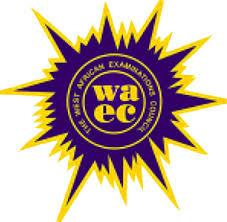WAEC Catering Syllabus 2020/2021 | See Concentrated Topics Here
WAEC Catering Syllabus 2020/2021 | See Concentrated Topics Here
WAEC Catering Syllabus 2020 is Out: The catering 2020/2021 West African Examination Council (WAEC) Syllabus is aim at preparing candidates for the Board’s examination.

This is a complete compilation of the 2020 WAEC Syllabus for Catering. This Syllabus aims at preparing candidates for the upcoming Examination.
AIMS AND OBJECTIVES
The general objectives of the catering craft syllabus are to test candidates’
- level of development of professional attitude and skills;
- understanding of all food commodities in terms of cost, quality and use;
- understanding of the methods of cooking and ability to produce variety of dishes and drinks for various types of occasions, establishments and individuals;
- understanding of dietary adequacies and procedure for producingdishes;
- understanding and application of hygienic practices in handling food;
- acquisition of necessary skills required for the production of pastry and confectionery products;
- application of the methods of choosing, caring for and storing kitchen equipment;
- knowledge of safety precautions in catering;
- enterprise skills in menu costing and planning.
EXAMINATION SCHEME
There will be three papers, Papers 1, 2, and 3. Papers 1 and 2 will be combined in a 1½ – hour composite paper.
Paper 1: This will comprise forty multiple choice questions to be answered in 40 minutes for 40 marks.
Paper 2: This will comprise six short essay questions out of which candidates will answer five within 50 minutes for 40 marks.
Paper 3: This will be an alternative to practical test and will comprise five short structured questions. Candidates will be expected to answer all the questions in 40 minutes for 40 marks.
DETAILED SYLLABUS
| TOPIC | CONTENTS |
| I.THE CONCEPT OF CATERING
(1) Hospitality industry/catering
(2)Types of catering establishments
(3) Culinary terms
(4) Safety precaution in catering
(5)Sanitationand Hygiene in catering.
II. FOOD COMMODITIES AND METHODS OF FOOD PREPARATION
(1) Study of food commodities and principles of cooking methods.
(2) Principles of cooking methods and practical demonstrations
III SERVICE OF FOODS AND DRINKS
(1) Food and beverage service personnel.
(2) Types of food service and table laying/setting.
(3) Types of alcoholic and non alcoholic drinks.
(4) Costing and control in catering.
IV. KITCHEN EQUIPMENT AND THEIR USES
(1) Types of kitchen equipment and their uses.
(2) Care and maintenance of kitchen equipment.
V. MENU PLANNING (1) Principles of menu planning.
(2) Types of menu and demonstrations.
(3) Special menu and demonstrations.
(4) Accompaniments
|
(a) Definitions: (i) Hospitality (ii) Catering (b) Components of hospitality industry
(a) Types of catering establishment e.g. hotel, restaurant, hospitality catering, outdoor catering, school, mobile catering etc. (b) Functions of catering establishments.
(a) Culinary terms commonly used in catering (b) Glossary of culinary terms. (a) Types and causes of accidents. (b) Prevention/management. (c) First aid (d) Fire fighting equipment
Types of sanitation and hygiene such as: (i) Water sanitation (ii) Environmental sanitation (iii) Food safety practices (iv) Kitchen hygiene (v) Personal hygiene
(a) Food commodities e.g. poultry, game, meat, fish, vegetables, fruits, dairy products, pulses, cereals, herbs, flavourings etc. (b) Methods of cooking: (i) Boiling e.g. stock, soups and sauces. (ii) Roasting e.g. fish, beef and poultry. (iii) Grilling e.g. fish, meat etc. (iv) Baking e.g. pastry and confectionery.
(a) Principles of cooking methods (b) Preparation of the various food commodities. (c) Standard/local measurements.
(a) Personnel in the foods and beverage area. (b) Functions of food and beverage personnel.
(a) Different types of food service e.g. Gueridon, silver service, waiter service, vending, buffet and banquet service. (b) Types of covers (c) Types of table laying/setting
(a) Bar (b) Alcoholic beverages (c) Non alcoholic beverages
(a) Cost/sales (b) Dish costing (c) Portion control
(a) Kitchen equipment (b) Uses of kitchen equipment.
(a) Careof various kitchen equipment (b) Maintenance of kitchen equipment
(a) Meaning and scope of menu. (b) Factors that affect menu planning.
(a) Types of menu e.g. table d’hote, a la carte, and special occasions. (b) Others: – breakfast, tea, dinner, supper, luncheon, carte du jour, plate du jour etc.
(a) Meals plan for vegetarians (b) Meals plan for the vulnerable group. (c) Meals plan for manual, sedentary workers etc. (a) Food accompaniments. (b) Table accompaniments.
|
RECOMMENDED TEXTS
- Restaurant and catering operations by: Doyin Akin-Bankole Pub. Diamond Publications Surulere, Lagos. Nigeria.
- Basic Certificate Catering. A Hand book for basic schools: by Mrs. Jessie Osei Kofi Pub. Rainbow Publications Limited, Kumasi – Ghana.
- The Theory of catering by Cesrain&Kinton’s.
- Practical Cookery by Foskett, Ceserani&Kinton.
- Food and Beverage Service by:- Dennis Lillicrap and John Cousins
- O – Level and CSE Cookery Angela Creese.
- The Kingsway Book of Cookery – Dora Seton.
- The students Cookery Book by: Ehid O’Reilly – Wright.
- Catering – A guide to Teachers and students by Igboanbusi, J.N.
- Essentials of Catering Management by: Omozuwa O.
CSN Team.
